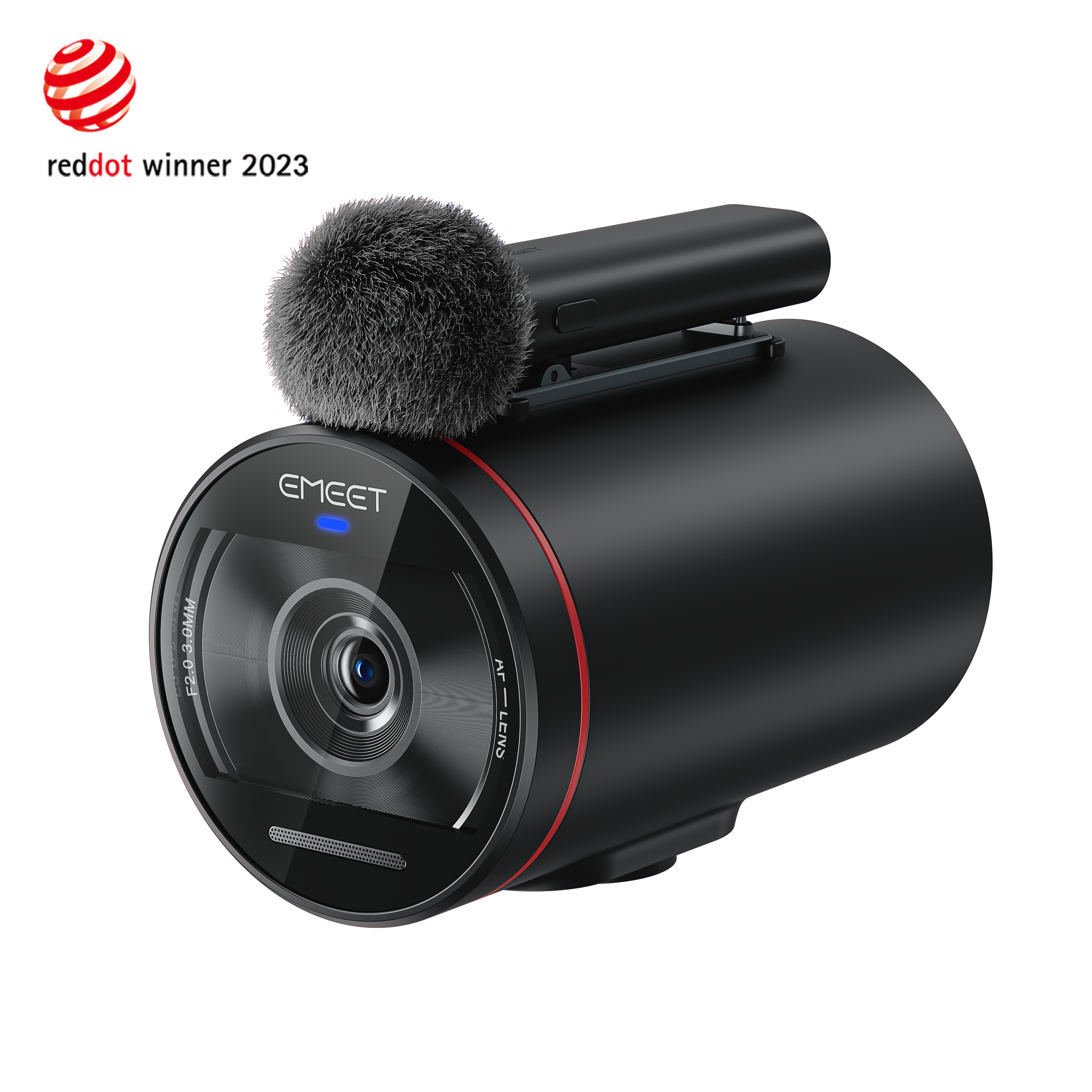Meetings are an essential part of any business, but they can also be a source of frustration and inefficiency. In this blog, we'll explore ten tips to help you run an effective meeting that improves communication, increases productivity, and ensures that everyone leaves feeling that their time was well spent.
A survey by Verizon Conferencing found that "nearly 90% of professionals admitted to daydreaming, missing parts of the meeting, or feeling they had wasted time during meetings."
On the other hand, a survey by the Harvard Business Review found that "regular team meetings improved communication, collaboration, and innovation."
Importance of Effective Meetings in Business
Effective meetings are essential for any organization or team. They provide a forum for discussion and decision-making, critical for moving projects forward and achieving goals. When meetings are run effectively, they can help save time and increase productivity, as everyone is aware of what is expected and clearly understands their role in the project. Effective meetings can also improve communication and collaboration between team members, departments, or business partners. Meetings can ensure that everyone is on the same page and aware of the issues and opportunities that need to be addressed. Finally, effective meetings can also keep everyone accountable by assigning tasks, setting deadlines, and encouraging follow-up discussions. Overall, effective meetings are an essential tool for achieving success in any organization or team.

What qualifies as an effective meeting?
An effective meeting should be able to achieve its intended objectives, and the participants should be satisfied with the results. The following are some indicators for assessing the effectiveness of a meeting:
1. Clear objectives:
Setting clear meeting objectives is essential to guide the discussion and ensure everyone is on the same page about the purpose of the meeting. The meeting objectives should be specific, measurable, and aligned with the organization's goals.
Goals can include:
- Annual budget estimation for 2024
- Competitors product review
- Next promotion steps for upcoming products
- Product training
- General information synchronize
2. High participation:
Participation is important because it ensures that everyone feels heard and included, increases engagement, and leads to more productive outcomes. Participants can be encouraged to participate by setting ground rules that encourage respectful dialogue, using icebreakers to warm up the discussion, and giving everyone a chance to speak.
3. Reasonable timeframe:
A reasonable timeframe is important so that meetings don't drag on for too long, leading to exhaustion and frustration on the part of participants. On the other hand, a meeting that is too short may not allow time for all important topics to be covered adequately.
An example would be:
1. Opening (5 minutes)
Introduce the purpose of the meeting and the agenda (2 minutes)
Welcome attendees and thank them for their time (3 minutes)
2. Review previous meeting minutes (10 minutes)
Review and approve the minutes from the previous meeting (5 minutes)
Address any action items from the previous meeting (5 minutes)
3. Agenda items (60 minutes)
Go through each agenda item in order, allowing each member to speak on the topic (45 minutes)
Dedicate a specific amount of time to each item to stay on track (15 minutes)
Ensure all necessary decisions are made and documented
4. Action Items (10 minutes)
Review any new action items resulting from the meeting (5 minutes)
Assign ownership and deadlines for each action item (5 minutes)
5. Closing (5 minutes)
Summarize the decisions made during the meeting (2 minutes)
Confirm the next meeting date and time, as well as any additional details or topics to be discussed (2 minutes)
Thank the attendees for their participation and close the meeting (1 minute).
Total estimated meeting time: 80 minutes.
4. Clear decisions:
Clear decisions mean that the outcomes of the meeting are actionable, agreed upon, and communicated effectively. Meeting participants should know what is expected of them and what actions need to be taken before the next meeting. Clarity is achieved by restating decisions, assigning action items, and setting deadlines.
For instance, at the end of a team meeting, the manager assigns action items to the following members:
John - compiles and analyzes the survey results.
Mary - drafting an email to be sent to all customers acknowledging their feedback and outlining our plans to address their concerns.
Tom - scheduling a follow-up meeting with a focus group to gather more in-depth feedback.
5. Adequate information:
Adequate information means that participants have all the necessary materials and context to contribute effectively to the discussion. Providing an agenda and reference materials ahead of time can help meeting attendees prepare and ensure a smoother discussion.
Let's use a financial meeting, for instance. You will need to prepare the following documents in order for the meeting to run smoothly:
- Financial statements: The financial statements include the Balance Sheet, Income Statement, and Cash Flow Statement.
- Budget Reports: The budget shows the planned income and expenses for a given period, typically a year.
- Sales Reports: Sales reports provide information on the sales performance of the business.
- Accounts Receivable and Payable Reports: These reports show the amount of money owed to the business by customers and the amount of money the business owes to suppliers and vendors.
- Tax returns: Tax returns provide an overview of the company's financial activity for a given period and show the amount of taxes paid.
- Financial projections: Financial projections show expected future financial performance of a business based on key financial indicators such as sales, expenses, and inventory.
- Investment reports: Investment reports provide information about the company's investments and portfolio performance.
6. Complete records:
Comprehensive records ensure that decisions made in the meeting can be referred to later, and accountability for action items is shared among participants. Depending on the meeting's purpose, minutes or notes should include an overview of the discussion, key decisions, and action items agreed upon.
You can use a meeting agenda or meeting minutes to summarize all the key info that was discussed in the meeting and to ensure all the discussion topic has been discussed in the meeting
Meeting agenda template available in this article👇

10-free-meeting-agenda-templates-pdf-word
Using meeting agenda templates can save time and effort, standardize and improve the efficiency of meetings, and facilitate better communication and understanding among participants.
EMEET
7. Timely feedback:
Timely feedback helps participants understand the effectiveness of the meeting and how they can improve their contributions. Feedback can be gathered through surveys or discussions, immediately following the meeting or at a later time. Feedback can help the facilitator improve their facilitation skills and adjust the meeting format and agenda for future meetings.
A post-meeting survey would be useful, where participants are asked to rate the effectiveness of the meeting and provide suggestions for improvement.
Post-meeting survey template:
1. On a scale of 1-5, how effective was the meeting in achieving its goals?
1 - Not effective at all
2 - Slightly effective
3 - Moderately effective
4 - Very effective
5 - Extremely effective
2. Did the meeting cover all the topics that you expected it to?
- Yes
- No, please specify any missing topics.
3. Was it easy to follow the meeting agenda?
- - Yes
- - No, please specify any areas where the agenda could have been improved.
4. Were all participants engaged and able to contribute to the discussion?
- - Yes, everyone was engaged
- - Most participants contributed
- - Only a few participants contributed
- - No one participated
5. Was the meeting organized and well-run?
- - Yes, it was organized and well-run
- - Somewhat, there were areas for improvement
- - No, it was disorganized and poorly run
6. What suggestions do you have for improving future meetings? Please provide any feedback or ideas you have for making the meetings more effective.
7. Do you have any additional comments or feedback about the meeting?
Thank you for taking the time to provide your feedback. Your insights and suggestions will help us in organizing more effective meetings in the future.
8. Visible results:
Visible results help participants recognize that their efforts have been worthwhile and they have contributed to the success of the organization's goals. Setting clear goals and outcomes beforehand ensures that the meeting attendees understand what the expectations are, and how the success of the meeting will be evaluated.
Typical goals for sales meetings would be:
1. Reviewing sales performance: Discussing the sales performance of the team or the company in the previous month/quarter and identifying areas that need improvement.
2. Introducing new products or services: Educating the sales team about new products or services that the company has launched and discussing the strategy for selling them.
3. Updating the team about the competition: Sharing information about the competition and discussing ways to gain an advantage.
4. Developing sales strategies: Creating and refining sales strategies to increase sales and improve customer relationships.
5. Motivating the sales team: Encouraging and motivating the sales team to achieve their targets and providing them with the necessary tools and support to achieve them.
Overall, effective meetings should be engaging, productive, and goal-oriented. Each of the above points plays a critical role in ensuring that meetings are effective and valuable for all participants.

Ten tips for running effective meetings
1. Define the purpose of the meeting:
Having a clear purpose for the meeting and communicating that purpose to participants can improve productivity and engagement. Before scheduling a meeting, define its purpose. Is it a brainstorming session? A project update? A decision-making meeting? Knowing the purpose of the meeting will help you determine who needs to attend, how long it should last, and what the desired outcomes are. One study found that meetings with clearly defined objectives and agendas resulted in meetings that were more effective and efficient, with lower levels of stress and more positive outcomes.
2. Create an agenda:
An agenda is a critical tool for running an effective meeting. It helps to keep the meeting on track, ensures that all necessary topics are covered, and helps to manage time effectively. Share the agenda with all attendees ahead of time, so everyone knows what to expect and can come prepared. According to a survey by Adobe, 63% of workers say meetings that have a clear agenda and purpose are more productive. An agenda delineates the goals and objectives of the meeting, provides structure, and allows participants to prepare effectively.
3. Set a time limit:
Meetings can quickly become time-consuming, and it's easy for them to run over their allotted time. Set a time limit for the meeting and stick to it. Encourage attendees to be concise, avoid tangents, and keep the meeting moving. A study by Harvard Business Review found that decreasing the length of meetings from an hour to 30 minutes could save an organization an average of 15% in personnel costs. Setting a time limit helps ensure that the meeting stays on track and efficiently.
4. Invite only essential attendees:
Avoid inviting people to the meeting who don't need to be there. The more people you invite, the more difficult it is to keep the meeting focused and productive. Invite only important decision-makers and stakeholders. According to a study by Bain & Company, reducing the number of participants in meetings by 20% can improve efficiency and decision-making. Participants who aren't essential to the meeting's objectives can often detract from reaching desired outcomes.
5. Start on time:
Starting a meeting on time reflects respect for everyone's time and reinforces the importance of punctuality. Repeated tardiness can result in stress and frustration, leading to negative attitudes towards ongoing meetings.
6. Encourage participation:
Encourage participation from all attendees, but also be mindful of individuals who may be quieter or less likely to speak up. Make sure everyone has a chance to contribute and feel heard. A study by the University of North Carolina found that teams with high participation were more innovative and more likely to overcome obstacles.
7. Avoid distractions:
Meetings can easily be derailed by distractions like phone calls, emails, or other interruptions. Ask attendees to turn off their phones or put them on silent mode and avoid multitasking. A study by the University of California, Irvine found that it takes up to 23 minutes on average to regain focus after a distraction. Setting clear guidelines and expectations for device usage and limiting the use of mobile devices can help minimize distractions.
8. Assign action items:
Assigning action items to participants at the end of the meeting helps ensure accountability and can enhance productivity. In a survey by Clear Company, 72% of respondents said they thought action items were the most important part of a meeting.
9. Summarize critical points before ending the meeting:
Summarizing key points and decisions at the end of the meeting reinforces the meeting's objectives and ensures everyone is on the same page. A study by Behavior Research and Therapy found that summarization increased participants' retention rates by up to 70%.
10. Evaluate the meeting:
After the meeting, evaluate its effectiveness. Were the objectives met? Was the agenda followed? Were the attendees engaged and productive? Use feedback to improve future meetings. In a survey by Harvard Business Review, 85% of executives indicated that they were unhappy with the efficiency and effectiveness of their company's meetings. Evaluating meetings for effectiveness helps improve outcomes and better use of everyone's time.

Final Thoughts
In conclusion, effective meetings require planning, structure, and clear communication. Following these ten tips ensures that your meetings are productive and efficient and achieve the desired outcomes. Remember to communicate the purpose of the meeting, set a time limit, create an agenda, invite-only essential attendees, start on time, encourage participation, avoid distractions, assign action items, summarize key points, and evaluate the meeting.




